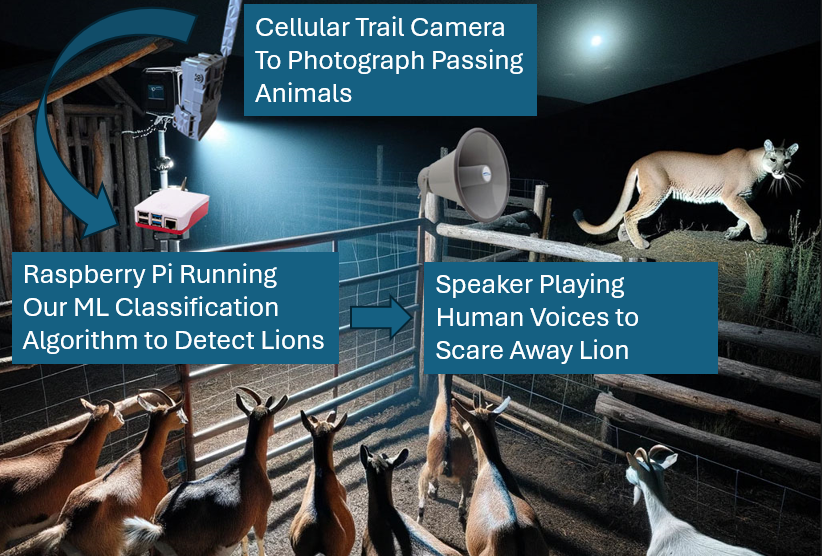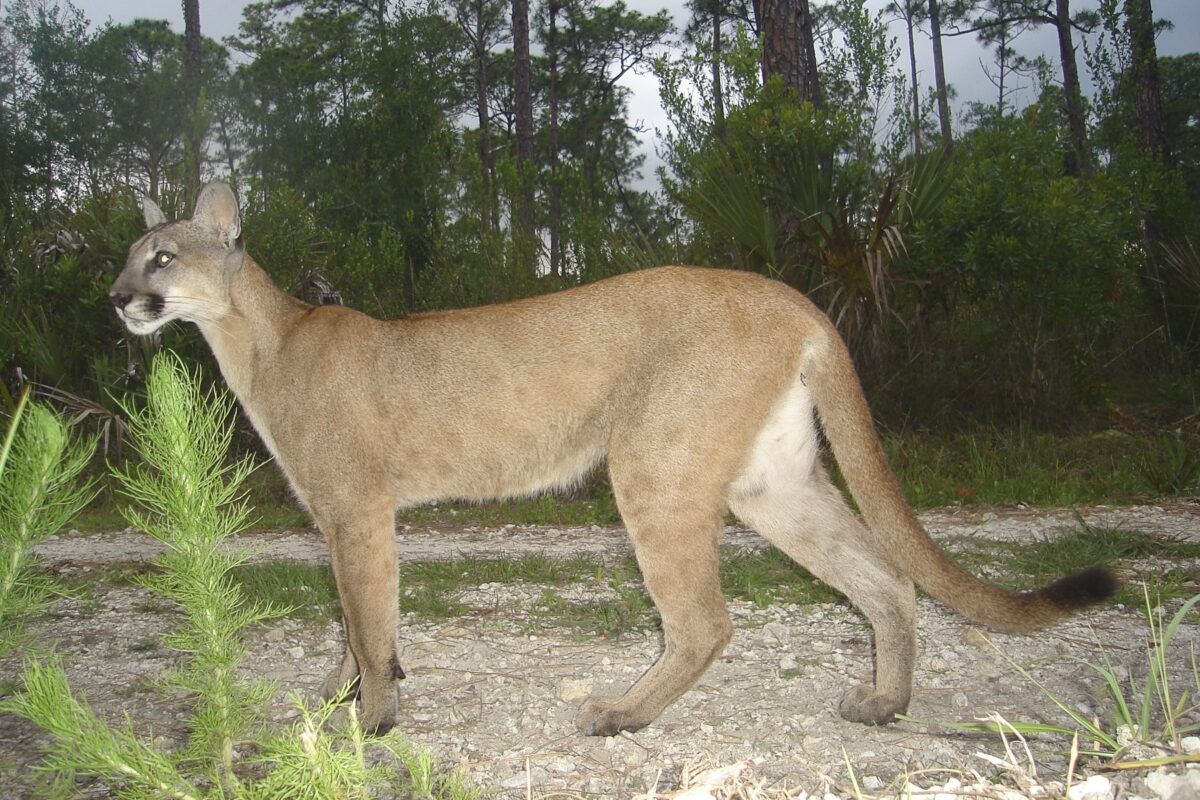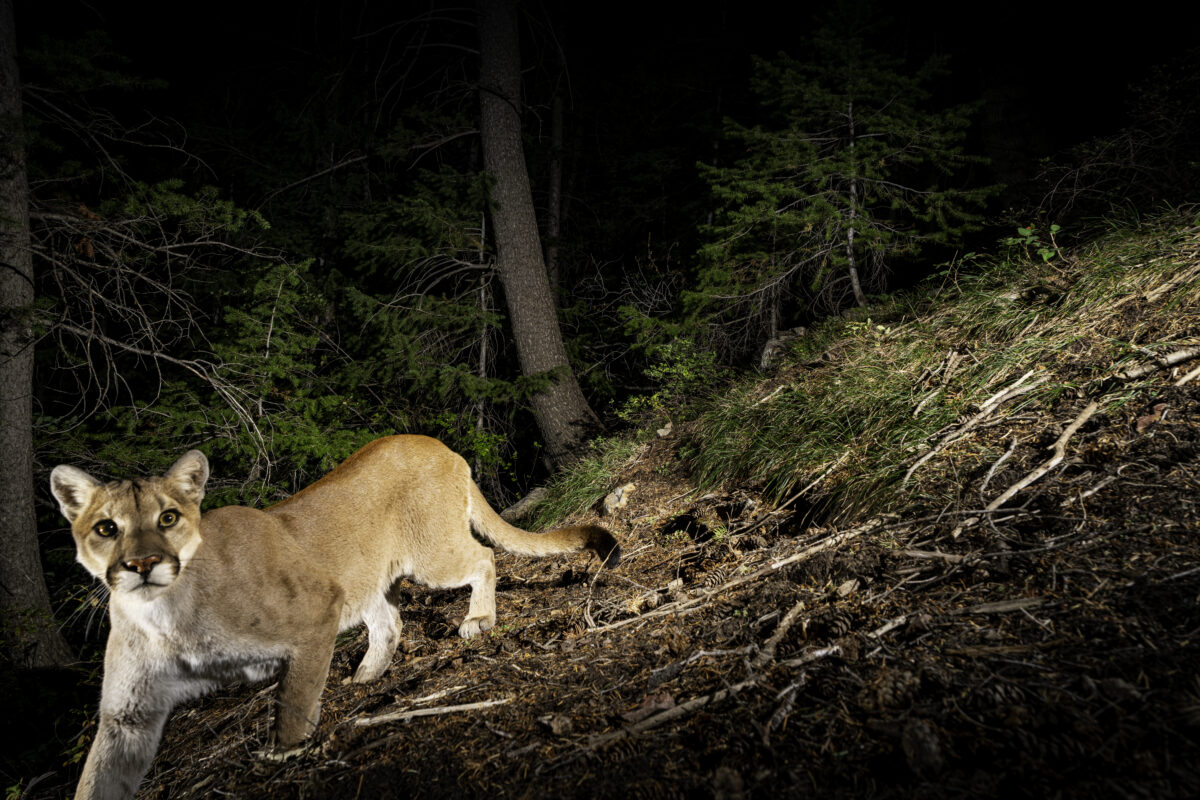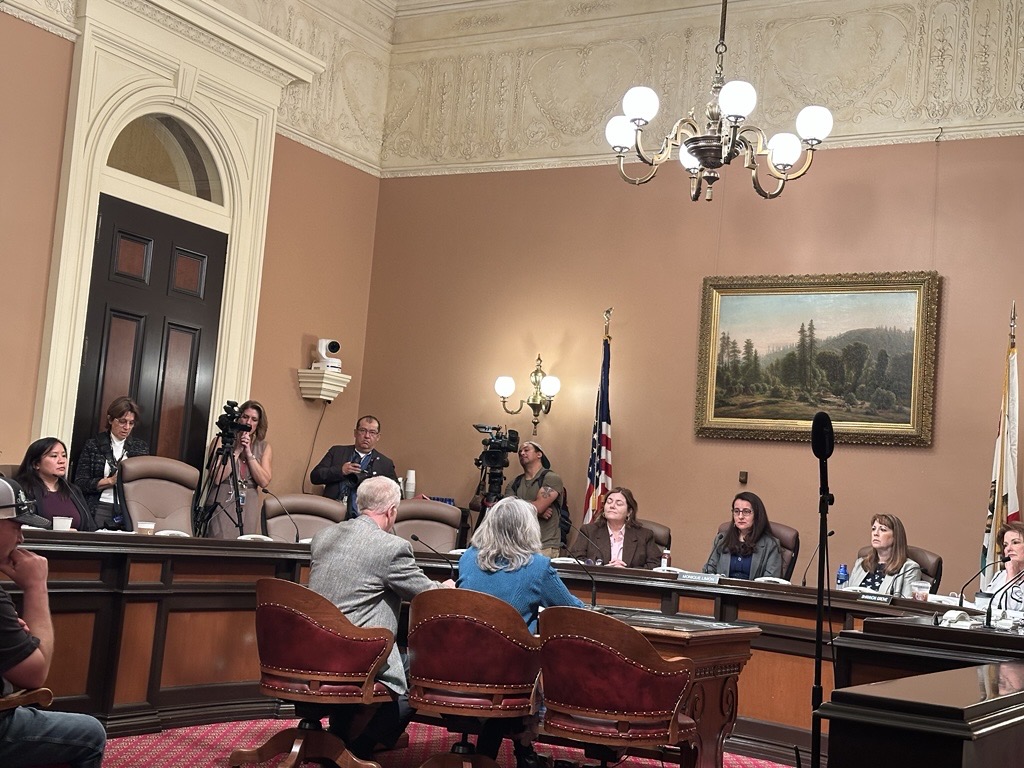
PumaGuard uses AI to accurately detect mountain lions on trail cameras and triggers sensory deterrents to keep them away from livestock. | Graphic courtesy of Aditya Viswanathan
Human development and increasingly frequent and intense wildfires have disrupted wildlife habitats in western and southwestern states like New Mexico. When habitat becomes fragmented, there can be more conflicts between people, livestock, and displaced carnivores like mountain lions. Studies suggest that the sound of human voices, especially when combined with other sensory experiences like flashing lights and sporadic loud noises, are an especially effective method for keeping mountain lions away from livestock. “Stacking” deterrent methods on top of human voices has proven so effective that some sheep and goat ranchers keep a transistor radio tuned to talk radio near their flocks. The sound of humans acts as a first line of defense; if that first deterrent fails to keep a lion at a distance, then flashing motion lights, loud sonic devices, and/or livestock guardian dogs inside an electrified fence will likely do the trick. Stacking deterrent methods, as opposed to using just one that may not deter every lion every time, has proven to be a very effective way to keep both livestock and lions safe.
What if ranchers could target their deterrent stacks so that they’re activated only when there really is a mountain lion around (as opposed to a neighbor walking by)? Light and sound deterrents are most often motion-activated. That means that they’re triggered indiscriminately by movement, which may or may not come from a mountain lion. Deterrent stacks are effective; they are also the broadest-stroke approach to keeping away elusive, usually solitary feline carnivores.
Aditya Viswanathan, a sophomore, and his team of seven fellow high schoolers are refining the art and science of mountain lion deterrence. Aditya and his teammates are members of the Pajarito Environmental Education Center (PEEC) Nature Youth Group in Los Alamos, New Mexico. Their invention, called PumaGuard, is a machine learning application that detects and identifies, with 99% accuracy, mountain lions on trail cameras. When a puma is detected on camera, PumaGuard automatically triggers multiple deterrent methods in the exact area of the cat. Aditya and his team are testing the effectiveness of their tool at stables in Los Alamos stables near the students’ homes and where livestock-lion conflicts have persisted for a decade.

Members of the PEEC Nature Youth Group with Aditya Viswanathan (center back) | Photo by Ryan Ramaker, Los Alamos Daily Post
Using the Xception architecture, the algorithm achieved 99% training accuracy, 91% validation accuracy, and successfully identified pumas at the site. Our method can be deployed on a Raspberry Pi and processes images from multiple trail cameras via a local WiFi network, which enables near real-time detection. Once pumas are detected, the platform can trigger multiple mitigation responses, such as lights or sounds. This economical, scalable solution is simple to implement and holds promise as a globally applicable method for reducing predator-livestock conflicts while promoting coexistence. – Aditya Viswanathan
PumaGuard has already garnered impressive awards for the social impact and sophistication of its deployment of machine learning. It was one of four projects to win an award in the high school track of NeurIPS, the world-renowned AI conference. Of the 330 projects submitted by high school teams around the world, PumaGuard was recognized for its creative approach to the competition’s theme of how machine learning can have a positive benefit on society.
Since winning the award, Aditya has represented his team at conservation and AI conferences across North America. In October, he was featured as a speaker at the International Wildlife Coexistence Conference. In December, he is traveling to Vancouver, Canada to present PumaGuard and receive the NeurIPS award for his team. We are lucky to have him as our January Living with Lions Webinar guest to talk about how he, his team, and his fellow young adults are creatively and proactively protecting wildlife for their generation and beyond.
Fun fact: Aditya’s dad is Hari Viswanathan, the physicist and camera trapper who was featured in our 2025 Annual Calendar and our April Living with Lions webinar called Mountain Lion Spying 101.
Register now for Aditya’s webinar to learn more about PumaGuard and the future of wildlife coexistence.



 Facebook
Facebook Twitter
Twitter Send Email
Send Email


